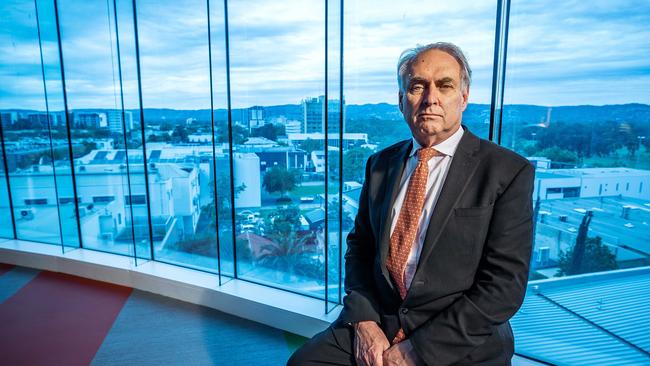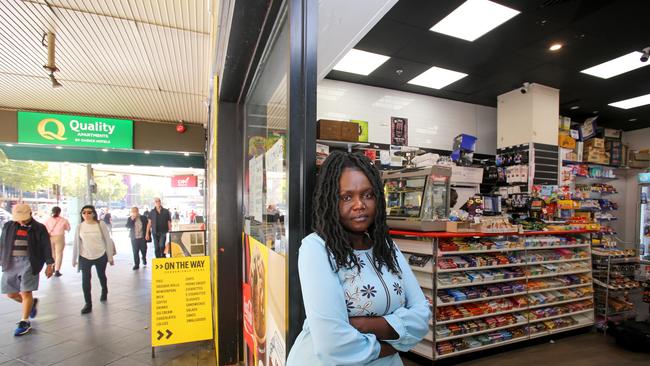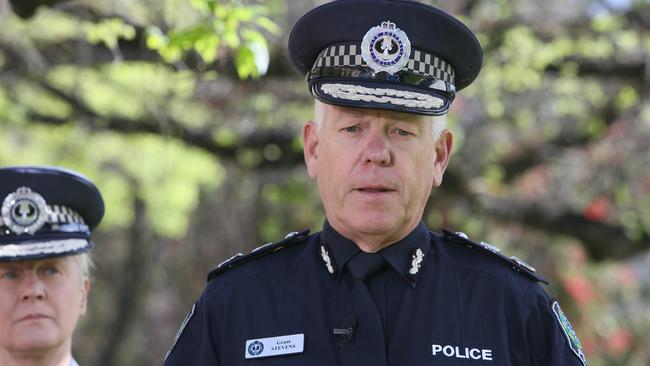Paul Starick: What’s gone wrong with Adelaide’s dismal CBD?
Adelaide has become a tale of two cities – the highs of big-event vibrancy fall to shabby streets and serious assaults, Paul Starick writes.
Opinion
Don't miss out on the headlines from Opinion. Followed categories will be added to My News.
Adelaide’s CBD has become a tale of two cities.
Borrowing the opening words of the Charles Dickens classic, the past week has been the best of times and the worst of times for the state capital’s heart.
The spectacularly successful AFL Gather round ignited a vibrancy and state pride not experienced since the heyday of the Adelaide Formula One Grand Prix.
Conversely, The Advertiser has cast a necessary spotlight on the city’s shabby streets, exposing a 12-year-high in serious assaults along with record property damage, shop and car thefts.
Adelaide’s showpiece King William St was branded “a disgrace” by Lord Mayor Jane Lomax-Smith during Tuesday night’s council meeting, when she declared the CBD’s central artery was “in a really shocking state”, “an embarrassment” and the “least well-maintained street that I have ever seen”. It’s hard to disagree with the Lord Mayor.
I started working in Adelaide’s CBD in 1994, helping cover the city council for Messenger Newspapers when Dr Lomax-Smith was a second-term Grey Ward member. The city was in a wretched state back then. Boarded-up buildings and abandoned shops were dismal relics of the early 1990s recession and State Bank financial disaster.
For too much of the time now, though, the CBD is about as parlous as it’s been since that gloomy time. The scourge of meth addiction plagues the place, too often fuelling a menacing environment, particularly after working hours. The tragedies of alcoholism and homelessness – the latter a societal disgrace in a first-world nation – stalk the streets.
These terrible trends reared their ugly heads before the Covid pandemic smashed CBD traders. Many are yet to recover from the twin hammer blows of pandemic shutdowns and the work-from-home trend, as pinpointed by federal Trade and Tourism Minister Don Farrell – a west-end city resident since 1976 and a former shop assistants’ union chief.

Anecdotally, city traders reinforce Senator Farrell’s view. As he says, the situation has improved a little bit since the Covid shutdowns but not significantly.
Senator Farrell correctly identifies many businesses will not become viable again until people return to the city regularly – not just a few days a week or for major events such as Gather Round. He argues for a push to get people back into the city, backed by the state government and Adelaide City Council.
The detailed, practical policy solution to boost city businesses by luring more people – workers and visitors – is not so simple, beyond Senator Farrell’s worthy idea of a promotional push.

As the city’s largest employer, the government could consider mandating a return-to-the-office policy. This certainly would swell city worker numbers.
But the work-from-home horse has bolted, even if the government was prepared to take on public sector unions.
Workers across the world enjoy the flexibility and argue they are more productive, even if many of their firms would prefer them in the office. Apple employees in the United States last August, for example, started a petition opposing the company’s policy requiring corporate workers to be in the office three days a week.
As renowned demographer Bernard Salt told an Adelaide Economic Development Agency business summit last May, “the pool room will be the zoom room” and days in the office spent “with IT people, doing training ordered by HR, collaborating with colleagues, meeting contacts over coffee and celebrating with lunches and dinners.”

Police Commissioner Grant Stevens faces a similarly tough challenge to rebuild confidence in the city’s safety.
Unfortunately, police street patrols seem to have diminished. Walking around the city during the day, the most noticeable police presence is vehicles parked near the Hindley St station.
It’s reasonable to suggest the community expects more.
A Tale of Two Cities’ first part is called Recalled to Life. Those who care about the city can only hope this happens to Adelaide’s heart.





